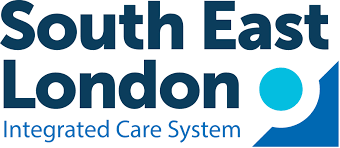
The One Pharmacy Workforce Model conceptualises a multi-level strategic framework for optimising the pharmacy workforce through a shared approach across health and care organisations.
Challenge
South East London Integrated Care System (SELICS) recognised a need to bring together health and care pharmacy and workforce stakeholders, to share one approach to attracting, developing and retaining a flexible and satisfied pharmacy workforce.
Initiatives to improve the experience of the pharmacy workforce were not aligned under a strategic framework leading to isolated approaches across the wider system. This has led to unwarranted variation and destabilisation of services.
The goal was to design a One Pharmacy Workforce Model which:
- Demonstrates understanding of the contextual complexity for the pharmacy workforce
- Encapsulates the priorities for SEL system with reference to national policy and programmatic influences
- Provides a framework adaptable to other systems, likely to have the same challenges as SELICS
What we did
We took an evidence-based approach to the design process, which included multiple sources of evidence across national, regional and organisational data, policies and processes, workforce insights and scientific literature. The structure was influenced by scientific evidence, for example the top-down multi-level work design interventions framework (Knight & Parker, 2021), and aligned to the key priorities of the long-term workforce plan We engaged with a range of leaders and representation from the wider workforce to understand their priorities for creating sustainable careers in health and care pharmacy.
We created a framework for the model and identified four important levels:
- System level - Developing collective leadership across partners is crucial in creating a shared approach.
- Working environment - Creating integration across different working environments (sectors), is important to create opportunities for joint working and mobility whist balancing the need for differentiation (retaining specialisms).
- Team level - Balancing team design and understanding the best configuration and composition for productivity and efficiency. It highlights the need to consider how different skills, roles and responsibilities can be optimised across pharmacists, pharmacy technicians and pharmacy assistants.
- Individual level - Highlighting the need to consider the maturity of role design and skills development for different roles across the pharmacy workforce.
- Underpinning principles for change were also identified and we recommended all workforce interventions at any level should consider these in their design and implementation.
Activity
Workforce
Workforce strategy - Supporting SELICS understanding of current and future state workforce needs in order to radically transform the pharmacy workforce.
Workforce optimisation - Optimisation of the pharmacy workforce by improving maturity around workforce design, transformation and utilisation.
Impact
- The framework demonstrates the complexity of the context and requirements for attracting and retaining the pharmacy workforce.
- The model recognises that multi-level work design interventions are key to the future development and sustainability of the workforce.
- Interventions are top-down, focused on improving system wide approaches that benefit all working sectors or bottom-up, allowing individuals and teams to adapt and flex their roles to maximise their effectiveness and efficiency.
- The model is not a step-by-step guide for operating as one pharmacy workforce, rather it is indicative of the steps and considerations that might support this.







